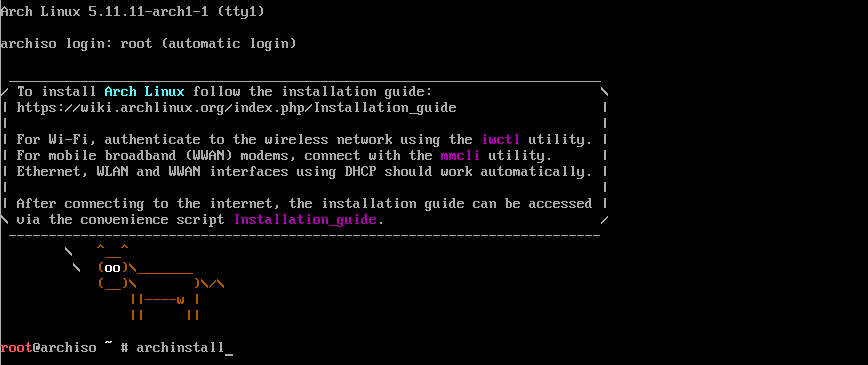Quick Tips for a more stable Arch Linux experience
We have revised and updated this article to ensure its relevance and accuracy in 2024. This updated guide is tailored to help you harness a most stable Arch Linux experience.
The existence of this article does not indicate that Arch Linux is unstable. It’s not, far from it. But for new users, there are certain precautions that should be taken so that the inherent cutting-edge freedom of Arch, does not get in the way of system stability.

What is Arch Linux?
Let’s trace back just a little. Arch Linux is an independently developed, x86-64 Linux distribution versatile enough to suit any role. Development focuses on simplicity, minimalism, and code elegance.
Arch is installed as a minimal base system, configured by the user upon which their own ideal environment is assembled by installing only what is required or desired for their unique purposes. GUI configuration utilities are not officially provided, and most system configuration is performed from the shell and a text editor. Based on a rolling-release model, Arch also strives to stay bleeding edge and typically offers the latest stable versions of most software.
Why use Arch Linux on desktops and servers?
Arch Linux may be a tad intimidating to some. However, once you have it running, it’s more fluid and simple than most Linux distros out there. You’ll soon get a sense of organization and beauty with everything Arch related. Be it with the OS, the community, or documentation.
The AUR (Arch User Repository) gives you access to all the software and 3rd party apps you can dream of. After you first install and set up Arch, or you can quickly install your must-haves from the AUR using packer or other AUR helpers.
Then head to the apps list to find even more app recommendations for an easy installation. No need to add repositories, compile manually or follow install how-tos. GitHub-based apps are also available for package installation.
Best of all, since Arch Linux is a rolling release distro, you only have to install it once. Yup, one install for the life of your hardware. No replacements are released every few months such as 16.04, 17.10, 18.04, etc. Nor does LTS (long-term support) mean you get trapped in time. To upgrade the Arch Linux OS, you simply roll with the command: pacman -Syu, and you’re done!
Say hello to Arch’s linux-lts package
You may think the terms bleeding edge and stable don’t play well together. Well, you’d be surprised. There’s a nice discussion here with the takeaway being that Arch can be as stable as you need it to be, or as stable as you make it.
The first recommendation for a more stable Arch Linux experience, as with most Arch tips and tutorials, starts with a quick read of the Arch Wiki… Enhance system stability (renamed System maintenance). On that page, you will find roughly 20 simple techniques to enhance Arch stability.
As discussed there, one often overlooked recommendation, is to switch to the Arch linux-lts package. The linux-lts package is an alternative Arch kernel package based on an older Linux kernel version and is available in the core repository.
This particular kernel version enjoys long-term support (LTS) from upstream, including security fixes and some feature backports, especially useful for users seeking to use Arch Linux on a server, or who want a fallback kernel in case a new kernel version causes problems. Also, see the list of kernels.

Update: New Arch Linux Installer
Arch Linux now provides a straightforward Installer to simplify the initial setup process. This tool is designed for efficiency, enabling users to quickly and easily select their preferred desktop environment and install essential components.
With the Installer, the complexities of manual configuration are significantly reduced, making it a practical choice for both beginners and experienced users. To get started, visit the Arch Linux Installer and begin your seamless installation journey.
Conclusion
In conclusion, this article serves as a comprehensive guide to achieving a stable and efficient Arch Linux experience. It addresses misconceptions about Arch’s stability and provides valuable insights into its rolling-release system, the Arch linux-lts package, and the new, user-friendly Installer.
May you enjoy many years of uninterrupted Arch bliss!
Also read Best Linux Distros for Beginner, Experienced and Expert users.
Disclaimer: Everything in this article was also published online in Arch’s extensive wiki. However, for whatever reason, there’s still a lot of misinformation about Arch’s stability and many users are not aware that these published tips exist.
Published: November 19th, 2014 | Last updated: January 30th, 2024
I keep being put off by the lengthy set up time with Arch. The stability issues were never a major hindrance for me but I like knowing there is a solution. Would you happen to have a guide on setting up Arch to make it less time consuming?
Hi Rexx. Thanks for asking! Yes, you can use the Archinstaller. GitHub - archlinux/archinstall: Arch Linux installer - guided, templates etc.
Here’s a great video guide:
Hello, some updates and corrections
It is x86_64 only since late 2017
This has never been a valid command, skype has never been in the official repository and pacman don’t deal with AUR pkgbuilds
The skype pkgbuild no longer exist, there is skypeforlinux-stable-bin now AUR (en) - skypeforlinux-stable-bin
@FabioLolix Thanks so much! This article was first published on November 19th, 2014, so I really appreciate this type of feedback to keep the advice current.
Note Skype used to be in the multilib repo.
So it used to be that you just allowed the multilib repo by uncommenting it:
Then just update pacman
and install Skype
Making those updates to the article now.
P.S. Welcome to the forums!